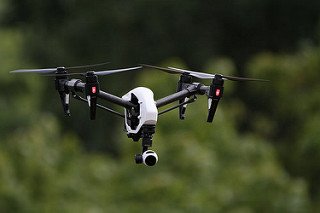
Acting Commissioner of Prisons Hayden Forde is calling for urgent investment in adaptive and upgradeable anti-drone systems for all correctional facilities, warning that as drone technology becomes more sophisticated, prison security measures must evolve to keep in step.
Forde made the call after a successful co-ordinated, intelligence-led operation disrupted yet another drone-smuggling attempt, this time at the Maximum Security Prison in Golden Grove, Arouca. Authorities continue to grapple with criminal elements using unmanned aerial vehicles to transport contraband into prison compounds.
“Today, it’s drones: tomorrow, it could be something else. Some drones can already bypass geofencing technology,” Forde told Newsday in a phone interview on September 30.
He stressed that every day without proper technology, is another opportunity for contraband to enter prison facilities, potentially endangering inmates, officers, and the public.
“Any system we invest in must be adaptable and scalable so we can continuously mitigate emerging threats like payload drops.”
While he acknowledged continued collaboration between security agencies is yielding results, Forde said that "significant gaps" remain in the prison system’s ability to detect and neutralise drone threats.
He cited the absence of geofencing, drone-jamming technologies, and modern surveillance tools as vulnerabilities in the prison’s current security infrastructure.
Asked about existing countermeasures, Forde said the Prisons Service does use drones for aerial surveillance, but its capabilities are limited.
“We do conduct aerial surveillance, but it’s limited. Another drone doesn’t simply enter our airspace without being noticed, but we do believe some drones are surveilling us as well. So, while we’re watching, it’s possible counter-surveillance is also taking place. That creates gaps, and it’s during those moments that contraband can be dropped undetected.”
He added although prison facilities are designated no-fly zones, there is no geofencing technology currently in place to enforce those restrictions. Nor are there radio-frequency jammers or spoofing devices targeting drones.
“We do have jammers, but those are primarily for cell phone use,” he said. “Nothing specific to drones at this time.”
Forde stressed the installation of anti-drone systems cannot be done in isolation, warning such systems could interfere with nearby aircraft.
He acknowledged the need for updated legislation and inter-agency dialogue on how best to regulate drone activity in and around prison airspace. He suggested that agencies such as the Civil Aviation Authority and Airports Authority be involved in reviewing existing regulatory frameworks.
“These systems could interfere with nearby aircraft, so legislative adjustments are definitely required,” he cautioned.
On Monday, Police Commissioner Allister Guevarro commended the latest operation, saying the prison facilities remain high-risk areas as criminal networks increasingly exploit technology to bypass traditional security measures.
Forde agreed, saying the outcome of the joint operation reflects the strength of unified national security action.
“This is a tangible representation of the strength and resolve of our security agencies when we unify our national security resources,” he said. “This illicit trade that threatens the safety of our facilities will not be tolerated.”
Forde said the service is actively engaged in discussions with Minister of Homeland Security Roger Alexander regarding the acquisition and deployment of anti-drone equipment at the Arouca prison. However, he noted the timeline for implementation depends on resource allocation in the upcoming national budget.
“That will take some time, as we're currently approaching the reading of the national budget. Once that’s finalised, we should be able to implement the necessary security measures to address the issues we have been experiencing for quite some time.”
In response to a question about potential collaboration with the Ministry of Digital Transformation or agencies involved in artificial intelligence, Forde said the Prisons Service is open to engaging with any entity that can support national security goals.
“Currently, we haven't explored that route in depth. But yes, if that's the appropriate agency to work with, we’ll certainly initiate those conversations.”
On the issue of public proximity to prison facilities, Forde said the 50-metre enforcement radius remains in place, but legal challenges persist based on location.
“For some of our prisons, like Port of Spain, a person could be standing on a nearby street or private property adjacent to the prison wall and not be in violation of any specific law,” he said. “That’s why we monitor perimeters very closely and assess all suspicious activity, especially loitering in high-risk zones.”
A police media release issued on September 29 detailed the joint operation, which began on September 28 and led to the arrest of three suspects approximately 50 metres from the Arouca prison wall. The operation also led to coordinated searches inside the facility, where illicit items were recovered from several cells. The exercise involved multiple national security stakeholders.
Forde said closed-circuit television (CCTV) systems are operational around the perimeter of major facilities, though he noted upgrades may be necessary.
The police release also said a vehicle linked to the drone operation was impounded under Section 12 of the Emergency Powers Regulations 2025. However, Forde clarified that the operation itself was not conducted under the State of Emergency (SoE).
“That particular situation wasn’t actually handled under the SoE,” he said. “We’ve built a strong, ongoing relationship with the police service. Through that collaboration, we’re able to gather intelligence and take action as needed, regardless of whether the SoE is in effect.”
Forde concluded by stressing the need for security agencies to remain proactive and ahead of evolving threats.
“Technology is constantly evolving, and the threats are only increasing. Any security measure that will keep our prisoners, our officers, and the public safe, I’m 100 per cent in support of it.”

 1 month ago
8
1 month ago
8
 English (US) ·
English (US) ·